You need an effective sales funnel to drive conversions and boost revenue if you do ecommerce. The right sales funnel makes a lot of difference for you if you love to attract new customers, boost average order value, or build long-term loyalty. Here are seven of the best sales funnels for ecommerce that can help you achieve your business goals and drive growth:
>>> MORE: Brevo Landing Page Review
1. Free Plus Shipping Funnel
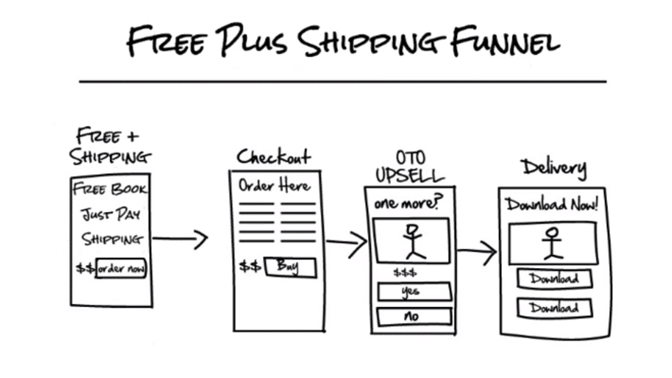
Choose the Free Plus Shipping Funnel to attract a large number of new customers quickly and effectively. By offering a product for free and only charging for shipping, you create an irresistible offer that lowers the barrier to entry. This strategy not only helps you build a substantial email list but also introduces your brand to a wider audience. It’s an excellent way to generate leads and start nurturing potential long-term customers.
- Has low barrier to entry
- Increases customer base
- Effective for lead generation
- Can be costly if you don’t manage it well
- Has the potential for low-profit margins
- Offers a product for free
- Charges only for shipping
- Attracts new customers
- Builds email list
2. Tripwire Funnel
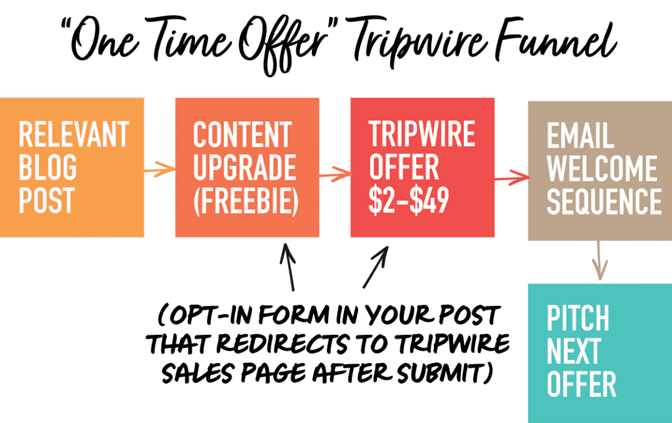
Opt for the Tripwire Funnel to convert visitors into buyers with a low-cost product that builds trust and paves the way for future upsells. This funnel is particularly effective in establishing a relationship with your customers, making them more likely to purchase higher-priced items later. By offering a valuable product at a low price, you can quickly turn prospects into paying customers and increase their lifetime value.
- Easy to implement
- Increases customer lifetime value
- Requires a compelling low-cost product
- May not work for all niches
- Offers a low-cost product
- Converts visitors into buyers
- Builds trust
- Facilitates upselling
3. Cross-Sell Funnel
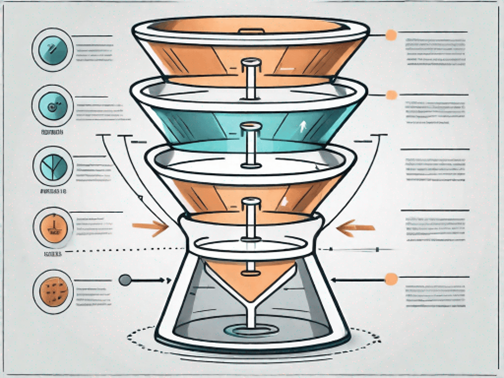
Implement the Cross-Sell Funnel to boost your average order value by recommending related products based on purchase history. This personalized approach enhances the customer experience, making them feel understood and valued. By suggesting complementary items, you can encourage customers to add more products to their cart, thereby increasing your revenue without acquiring new customers.
- Increases average order value
- Enhances customer experience
- Leverages existing customer data
- Requires accurate data
- Can be seen as pushy if you don’t do it right
- Recommends related products
- Uses purchase history
- Personalizes email campaigns
- Suggests on checkout page
4. Product Launch Funnel
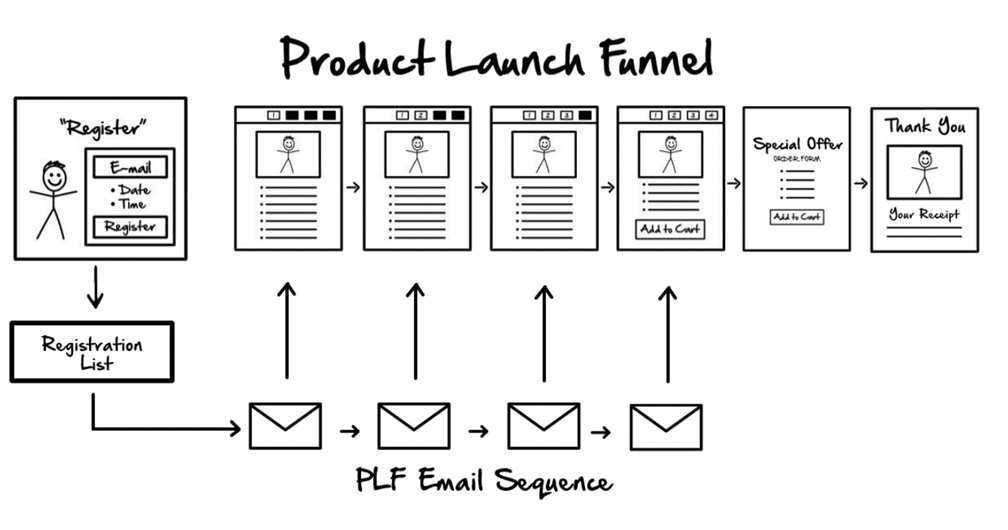
Use the Product Launch Funnel to generate excitement and anticipation for your new products. This funnel leverages a series of promotional emails or social media posts to create buzz and drive initial sales. Offering exclusive previews, discounts, or bonuses to early buyers can significantly boost your launch success and build strong brand awareness. It’s a powerful way to make a big impact with new product introductions.
- Generates excitement
- Boosts initial sales
- Builds brand awareness
- Proves time-consuming to set up
- Requires a strong marketing strategy
- Creates buzz
- Uses email or social media
- Offers previews, discounts, or bonuses
5. Upsell Funnel
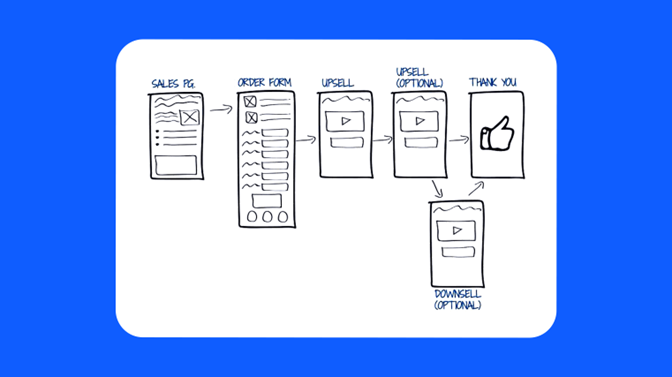
Choose the Upsell Funnel to maximize your revenue per customer by encouraging them to purchase more expensive or complementary products. Through targeted emails or pop-ups during the checkout process, you get to effectively increase the value of each transaction. This strategy leverages the existing interest of your customers, making it easier to sell additional items and boost your overall sales.
- Increases revenue per customer
- Leverages existing interest
- Easy to automate
- Can annoy customers if you overuse it
- Requires careful product selection
- Encourages purchase of more expensive or complementary products
- Uses targeted emails or pop-ups
6. Abandoned Cart Funnel
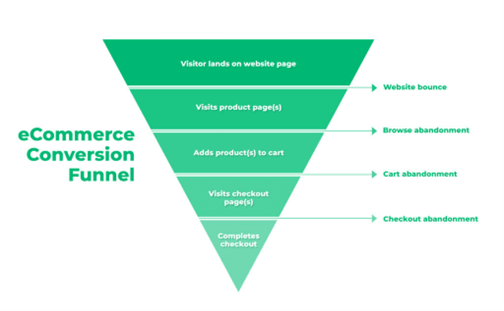
Implement the Abandoned Cart Funnel to recover lost sales by targeting customers who didn’t complete their purchases. Automated emails or retargeting ads with incentives can remind them of the items left in their cart and encourage them to finalize the transaction. This funnel is highly effective in improving conversion rates and recapturing potential revenue that you might otherwise lose.
- Recovers lost sales
- Easy to implement
- Improves conversion rates
- May require discounts
- Targets customers who didn’t complete purchase
- Uses automated emails or retargeting ads
- Offers discounts or incentives
>>> PRO TIPS : Lead Management – How to Automate It
7. Subscription Funnel

Opt for the Subscription Funnel to build customer loyalty and generate predictable income by converting one-time buyers into recurring subscribers. Offering special deals, free trials, or exclusive content can entice customers to subscribe and stay engaged with your brand. This funnel not only ensures a steady stream of revenue but also fosters long-term relationships with your customers, enhancing their lifetime value.
- Generates recurring revenue
- Builds customer loyalty
- Provides predictable income
- Requires a compelling subscription offer
- May have higher churn rates
- Converts one-time buyers into subscribers
- Offers special deals, free trials, or exclusive content
>>> GET SMARTER : ContactPigeon Landing Page Review
Overview of the Best Sales Funnel for Ecommerce

The best sales funnels for ecommerce stand out for their effectiveness in driving conversions and increasing revenue. The Free Plus Shipping Funnel attracts new customers by offering a product for free, with only shipping costs, making it an excellent lead generation tool. The Tripwire Funnel converts visitors into buyers with a low-cost product, building trust and paving the way for future upsells.
The Cross-Sell Funnel leverages purchase history to recommend related products, enhancing the customer experience and boosting average order value. The Product Launch Funnel creates excitement and anticipation for new products through a series of promotional emails or social media posts, often offering exclusive previews or discounts. The Upsell Funnel encourages customers to purchase more expensive or complementary products, increasing revenue per customer through targeted emails or pop-ups.
The Abandoned Cart Funnel recovers lost sales by targeting customers who didn’t complete their purchase, using automated emails or retargeting ads with incentives to finalize the transaction. Lastly, the Subscription Funnel converts one-time buyers into recurring subscribers by offering special deals, free trials, or exclusive content, generating predictable income and fostering customer loyalty.
How to Choose the Best Sales Funnel for Ecommerce
To choose the best sales funnel for your ecommerce business:
- Understand Your Target Audience: Identify who your customers are, their needs, preferences, and buying behaviors. This helps you tailor your funnel to meet their expectations.
- Define Your Goals: Determine what you want to achieve with your sales funnel. Are you looking to increase conversions, boost average order value, or build customer loyalty? Clear goals will guide your funnel selection.
- Analyze Your Products: Consider the nature of your products. High-ticket items might benefit from a Webinar Funnel, while low-cost items could be ideal for a Tripwire Funnel.
- Evaluate Your Resources: Assess the tools, budget, and time you have available. Some funnels, like the Product Launch Funnel, require more intensive marketing efforts, while others, like the Abandoned Cart Funnel, can be automated.
- Test and Optimize: Implement your chosen funnel and monitor its performance. Use analytics to track key metrics and make adjustments as needed to improve results.
- Consider Customer Journey: Map out the customer journey from awareness to purchase. Ensure your funnel addresses each stage effectively, providing value and guiding customers smoothly through the process.
Pros and Cons of the Best Sales Funnel for Ecommerce
Pros
- Increases Conversions: Effectively guides potential customers through the buying process, turning visitors into buyers.
- Boosts Revenue: Encourages higher average order values through upselling and cross-selling strategies.
- Enhances Customer Experience: Provides personalized recommendations and targeted offers, improving customer satisfaction.
- Builds Customer Loyalty: Converts one-time buyers into repeat customers or subscribers, fostering long-term relationships.
- Recovers Lost Sales: Targets abandoned carts with automated reminders and incentives, recovering potential lost revenue.
- Generates Leads: Attracts new customers through compelling offers and lead magnets, expanding your customer base.
- Creates Buzz: Generates excitement and anticipation for new products, driving initial sales and brand awareness.
Cons
- Resource Intensive: Requires significant time, effort, and sometimes financial investment to set up and maintain.
- Complexity: Involves multiple steps and tools, which can be challenging to manage without proper expertise.
- Potential for Low-Quality Leads: Some funnels may attract leads that are not highly qualified, leading to lower conversion rates.
- Customer Annoyance: Overuse of upselling, cross-selling, or retargeting can annoy customers and potentially drive them away.
- Discount Dependency: Reliance on discounts and incentives to drive sales can erode profit margins if not managed carefully.
- Data Accuracy: Requires accurate customer data for personalization, which can be difficult to obtain and maintain.
- Churn Rates: Subscription funnels may experience high churn rates if the value proposition is not compelling enough to retain subscribers.
- Data Quality: The accuracy of your metrics depends on the quality of your data. Inaccurate or incomplete data leads to misleading insights.
Pro Tips
Here are some pro tips to optimize your ecommerce sales funnels:
- Leverage Social Media: Use platforms like Facebook, Instagram, and Twitter to drive traffic to your funnel. Engage with your audience through posts, stories, and ads to create awareness and interest.
- Create Compelling Content: Develop blog posts, videos, and infographics that provide value to your audience. This content can attract potential customers and guide them through the funnel stages.
- Utilize Social Proof: Incorporate customer reviews, testimonials, and case studies into your funnel. Social proof builds trust and can significantly influence purchasing decisions.
- Optimize Product Pages: Ensure your product pages are clear, informative, and visually appealing. High-quality images, detailed descriptions, and easy navigation can improve conversion rates.
- Implement Email Marketing: Use targeted email campaigns to nurture leads and guide them through the funnel. Personalized emails based on customer behavior can increase engagement and conversions.
- Use Retargeting Ads: Implement retargeting ads to remind visitors of products they viewed but didn’t purchase. These ads can help recover lost sales and keep your brand top-of-mind.
- Offer Incentives: Provide discounts, free shipping, or exclusive offers to encourage conversions. Incentives can be particularly effective in abandoned cart and upsell funnels.
- Simplify Checkout Process: Make the checkout process as smooth and straightforward as possible. Reduce the number of steps, offer multiple payment options, and ensure mobile-friendliness to minimize cart abandonment.
- Analyze and Optimize: Continuously monitor your funnel’s performance using analytics tools. Identify bottlenecks and areas for improvement, and make data-driven adjustments to enhance effectiveness.
- Segment Your Audience: Divide your audience into segments based on behavior, preferences, and demographics. Tailor your funnel strategies to each segment for more personalized and effective marketing.
Recap
To optimize ecommerce sales, implementing effective sales funnels is key. The best strategies include the Free Plus Shipping Funnel, which attracts new customers by offering a free product with shipping costs, and the Tripwire Funnel, which converts visitors into buyers with a low-cost product, building trust for future upsells. The Cross-Sell Funnel enhances customer experience by recommending related products, while the Product Launch Funnel generates excitement for new products through promotional campaigns.
The Upsell Funnel increases revenue per customer by encouraging the purchase of more expensive or complementary products. The Abandoned Cart Funnel recovers lost sales by targeting customers who didn’t complete their purchase, and the Subscription Funnel builds customer loyalty by converting one-time buyers into recurring subscribers. Tailoring these funnels to your specific business needs significantly boost conversions and overall revenue.













